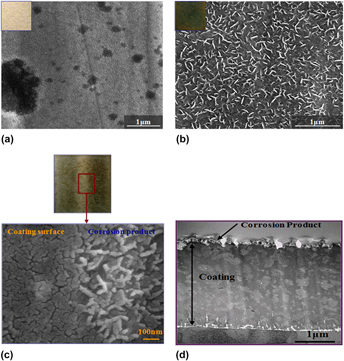Crossref Citations
This article has been cited by the following publications. This list is generated based on data provided by
Crossref.
Kim, Sung Jin
and
Jeong, Hong Chul
2016.
Development of Structural Steel and Trend of Welding Technology.
Journal of Welding and Joining,
Vol. 34,
Issue. 1,
p.
7.
Lee, Jae-Won
Park, Bo Ra
Oh, Se-Young
Yun, Dae Won
Hwang, Joong Ki
Oh, Min-Suk
and
Kim, Sung Jin
2019.
Mechanistic study on the cut-edge corrosion behaviors of Zn-Al-Mg alloy coated steel sheets in chloride containing environments.
Corrosion Science,
Vol. 160,
Issue. ,
p.
108170.
Lee, Jae-Won
Oh, Se-Young
Park, Bora
Oh, Min-Suk
and
Kim, Sung Jin
2020.
Corrosion Behaviors of the Eutectic Structure in Zn-Al-Mg Alloy Coated Steel in Chloride Containing Aqueous Environment.
Korean Journal of Metals and Materials,
Vol. 58,
Issue. 9,
p.
610.
Manna, M.
Dutta, M.
and
Bhagat, A. N.
2021.
Microstructure and Electrochemical Performance Evaluation of Zn, Zn-5 wt.% Al and Zn-20 wt.% Al Alloy Coated Steels.
Journal of Materials Engineering and Performance,
Vol. 30,
Issue. 1,
p.
627.
Dan, Atasi
Bijalwan, Pavan Kumar
Pathak, Abhishek Subhas
and
Bhagat, Amar Nath
2022.
A review on physical vapor deposition-based metallic coatings on steel as an alternative to conventional galvanized coatings.
Journal of Coatings Technology and Research,
Vol. 19,
Issue. 2,
p.
403.
Lee, Jae-Won
Son, Injoon
and
Kim, Sung Jin
2022.
Newly designed surface control using Si addition in trace quantity for Zn-2Al-3Mg alloy coated steel sheet with improved corrosion resistance.
Applied Surface Science,
Vol. 598,
Issue. ,
p.
153868.
Jo, Hae-Ju
Kwak, Young-Jin
Takai, Madoka
Lee, Seung-Hyo
Kim, Hye-min
and
Lee, Myeong-Hoon
2024.
Blackening phenomenon and corrosion resistance of Zn-Mg alloy coated steel by steam treatment.
Applied Surface Science,
Vol. 672,
Issue. ,
p.
160838.
Zhao, Xingyuan
Zhang, Ziyue
Liu, Xin
Liu, Qiuyuan
Jiang, Sheming
and
Zhang, Qifu
2024.
Enhanced corrosion protection of steel strip through advanced Zn–Mg alloy coatings manufactured by Continuous Physical Vapor Deposition: A review.
Materials Chemistry and Physics,
Vol. 328,
Issue. ,
p.
129884.
Kim, Sang-Hee
Kang, You-Jin
Lee, Kyung-Hwang
Kang, Jun
Lee, Myeong-Hoon
and
Yun, Yong-Sup
2024.
Analysis of Blackening Reaction of Zn-Mg-Al Alloy-Coated Steel Prepared by Water Vapor Treatment.
Coatings,
Vol. 14,
Issue. 1,
p.
93.
Zhang, Shasha
He, Xin
Shang, Ting
Jiang, Guangrui
Liu, Wuhua
Teng, Huaxiang
Chen, Tianqi
Cheng, Xuequn
and
Liu, Chao
2024.
The initial corrosion mechanism of hot-dipping Zn–Al–Mg alloy coating in chloride-containing solution.
Journal of Materials Science,
Vol. 59,
Issue. 44,
p.
20780.
